So you’ve gotten yourself a new Ultra HD 4K TV. Awesome! With any luck it will bring you and your family years of enjoyment.
Before you sit down for that first-of-many Netflix binge-watching marathon, there are a few simple tweaks, adjustments and additions that can help your TV perform even better than it does now. Better performance equals an even more absorbing experience.
Best of all, these are all easy-to-do and most won’t cost you anything.


Now playing:
Watch this:
Four great 4K TVs for every budget
2:18
Where to put it?
With a new TV it’s worth considering if your current TV placement is the best for your room. Chances are, with sofas, furniture, doorways and such, it is.
However, no TV can truly compete with direct light such as from windows, or even the reflections from bright lamps and light fixtures. If you’re considering moving your living room around, using the TV either as an excuse for change or because it won’t physically fit in the old location, consider if the new location will help or hurt the TV’s image. This doesn’t need to be the deciding factor in placement, but it’s worth bearing in mind.
Every room is different, but direct light will wash out an image, reflections of that light (perhaps on shirts, sofas or skin), might also be annoying. Darker curtains are never a bad idea… for picture quality. Aesthetically on the other hand, I’ll leave that up to you. If you’re wall-mounting the TV, consider one that pivots so you can angle the TV a bit during afternoon viewing sessions.
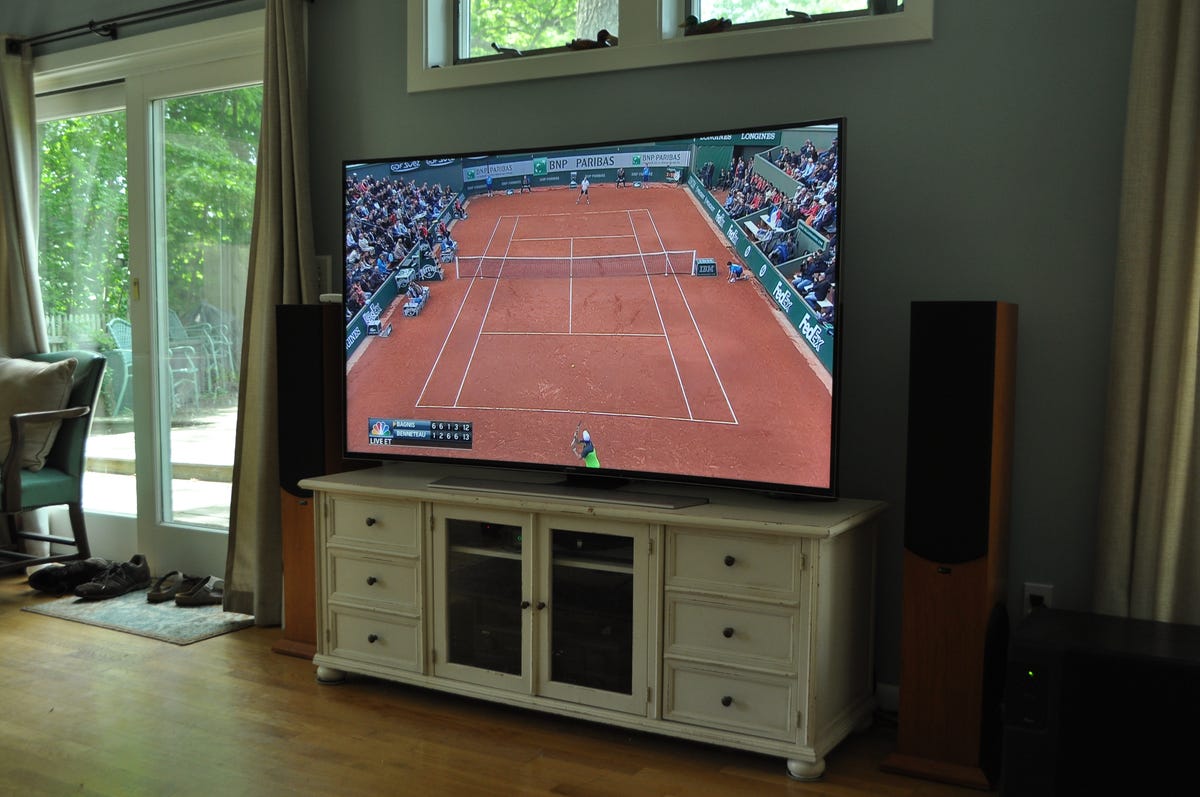

David Katzmaier
Another surprisingly controversial idea is that putting a TV above a fireplace is a bad idea. It is, for a number of reasons, but if you don’t care about those reasons, go for it. Keep in mind that placing a TV high above your seated line-of-sight can lead to neck pain. A wall mount that lowers the TV for viewing could alleviate this problem, though that’s an extra cost. If you actually use the fireplace, the added heat and particulates could adversely affect the life of the TV. Plenty of people mount their TV above fireplaces and have no issues, but others regret it. It’s something else to consider.
Setup
Once you’ve got your TV mounted, either on its stand or on the wall, it’s time to consider cables. Your old HDMI cables, assuming you have them, might work. It depends on the cables themselves and what you’re trying to connect.
An older cable or satellite box almost certainly doesn’t need new HDMI cables. If they worked with your old TV, they will probably work with your new TV. The same with older Blu-ray players and media streamers.
If, however, you want to connect a new 4K Blu-ray player, or a media streamer capable of 4K HDR, then you might need new cables. Fortunately, HDMI cables that work with 4K and HDR are cheap. Check out this feature about which HDMI cable you may need.
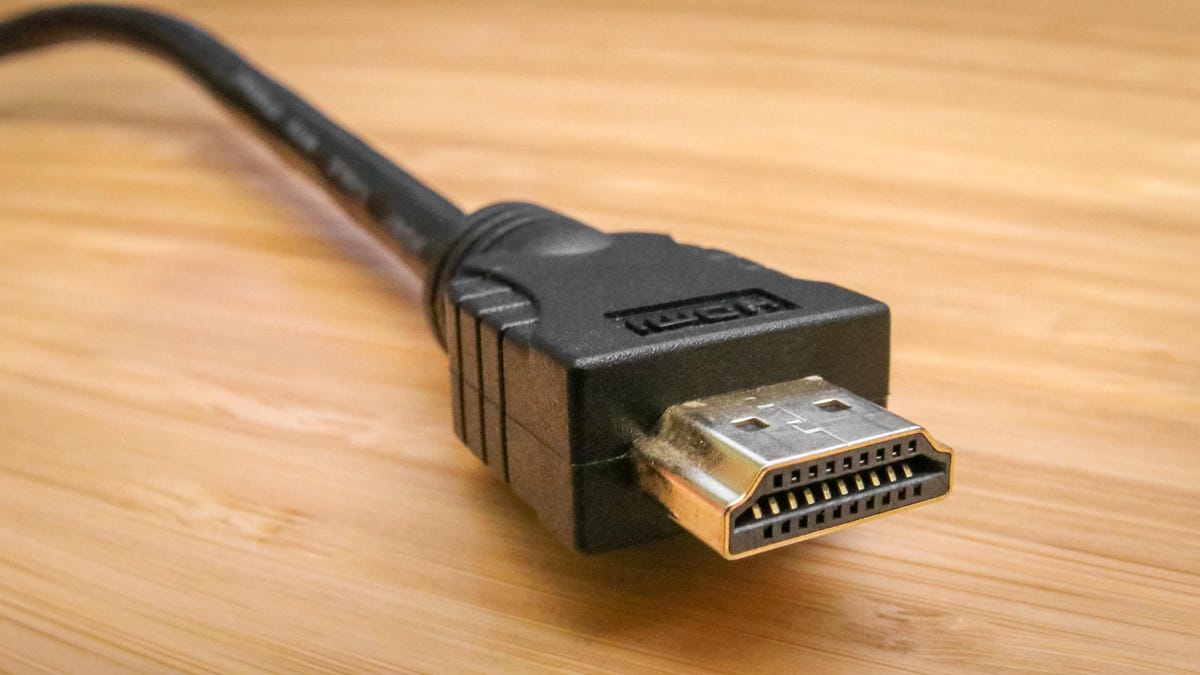

The ubiquitous HDMI cable
Geoffrey Morrison/CNET
If you’re thinking of running the cables through the wall, there are specific HDMI cables rated for this use. Maybe your local municipal codes doesn’t require these… but why not pay the bit extra for safety. Other codes, it’s worth noting, require you to run cables inside conduit. Best to Google it to be safe.
It’s also worth having a check of your home’s Wi-Fi and internet service. When was the last time you did that? Just because you could stream HD doesn’t necessarily mean you’ll be able to stream 4K. Check out how to improve TV streaming quality on Netflix, Hulu and more.
Settings/calibration
Now that everything’s connected, and you’ve gone through the initial setup screens, it’s time to make sure the TVs settings are all dialed in. Contrast, brightness, color and color temperature all have a huge effect on picture quality.
There are three ways to set these correctly: by eye, with a disc and with professional help.
By eye is the easiest, but the least accurate. Essentially it involves looking for certain types of images, and making adjustments depending on what you see… then making sure that doesn’t look wrong with other content. Check out how to make your TV picture look better than ever for more details.
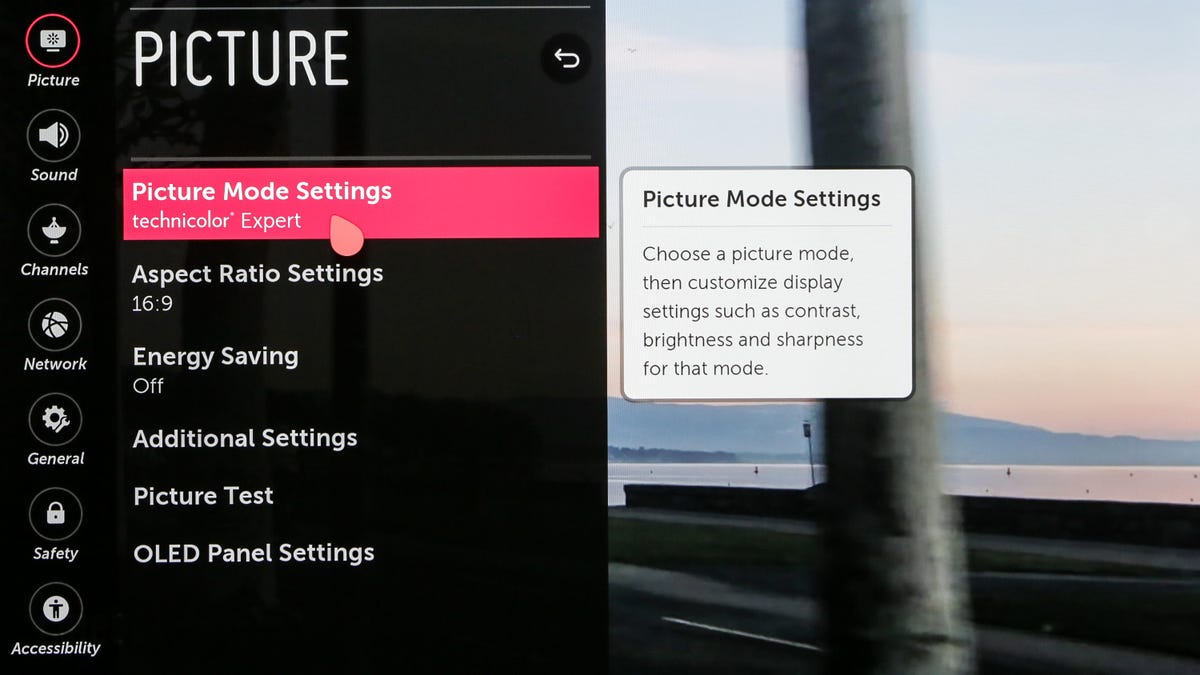

Sarah Tew/CNET
An easier and more accurate way is with a setup disc, like Disney’s WoW. This also involves looking at specific images, but in this case they’re specially-designed test patterns. These will get you much closer to the best settings possible with your TV. You’ll be able to see detail in shadows and bright highlights, skin tones of all kinds will look more realistic and so on.
The last step is hiring a professional. This costs a lot more money, but someone will come to your house and make sure every setting on your TV is exactly correct. In addition, most of these calibrators have specialized tools that let them set the color and color temperature to a more accurate degree than what’s possible from the factory or with your eye. This level isn’t for everyone, but if you’re looking to squeeze every bit of accuracy and performance out of your TV, this is the way to do it.
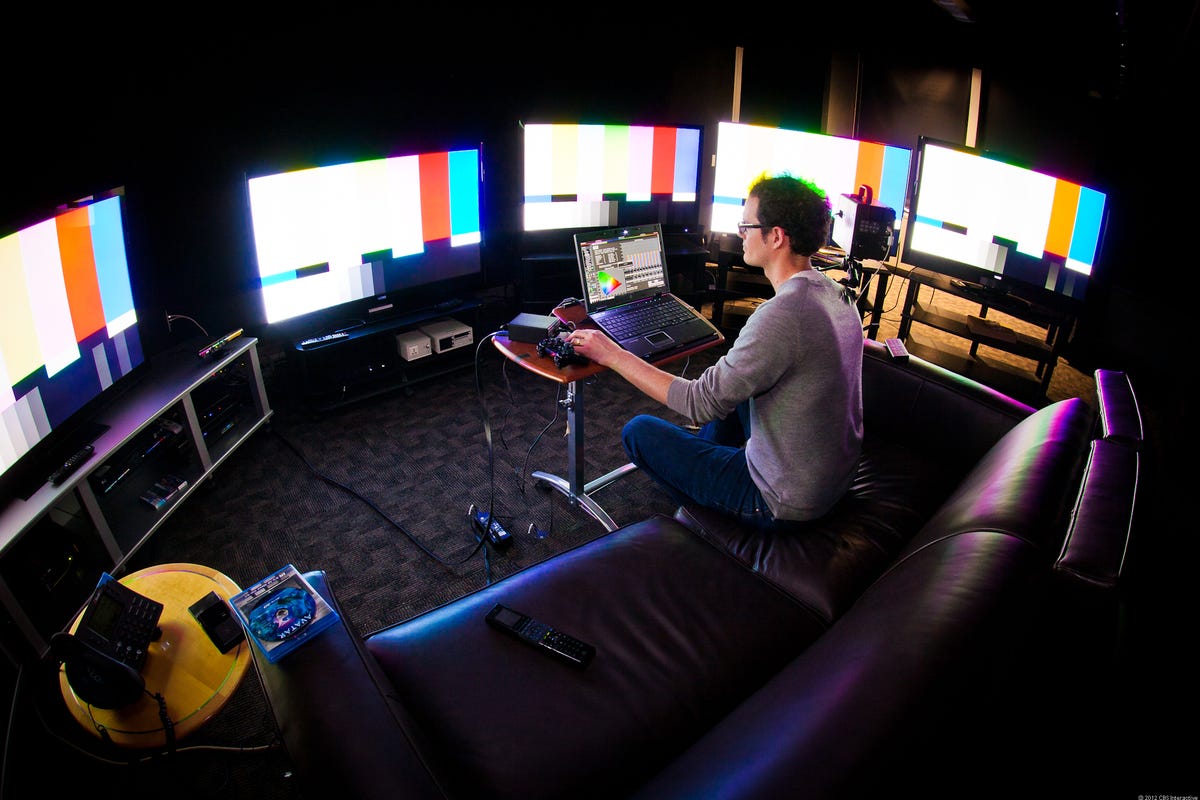

A final, but still important step, is to make sure all the settings are correct on your other equipment. If you have a cable or satellite box, make sure it’s set to output its highest resolution (though 1080i or 1080p likely doesn’t matter). Most devices will automatically adjust to whatever your new TV is (4K if available, 1080p if not). If you have a receiver, make sure it’s set to pass through the video to the TV and not try to adjust it on its own. That’s never good, as your TV will convert everything itself and probably do it well.
If the receiver isn’t capable of 4K, and you have 4K sources like a new media streamer or Ultra HD Blu-ray player, you’ll need to run the HDMI to the TV directly to get 4K. With any luck the TV will have ARC so you can get that audio back to the receiver. Alternately, many Ultra HD Blu-ray players have two HDMI outputs, one for audio.
Related on CNET
- Soap opera effect: Tom Cruise wants you to turn it off. Here’s how
- What is wide color gamut (WCG)?
- 8K TV: What you need to know
- Which HDMI cable do you need?
Sound bar or speakers
One last thing. Every TV deserves good speakers. The speakers built into the TV are not good. Ever. Some are better than others, but none offer the sound quality available from even an inexpensive sound bar. This is due to simple physics.
TVs are so thin there’s no way speakers are capable of putting out quality audio, at least not in any volume. If you have trouble understanding what people are saying during a movie, it’s entirely possible it’s just the mediocre speakers in your TV.
A sound bar of any price can help that and make your entire TV experience more cinematic. We have a list of great sound bars.
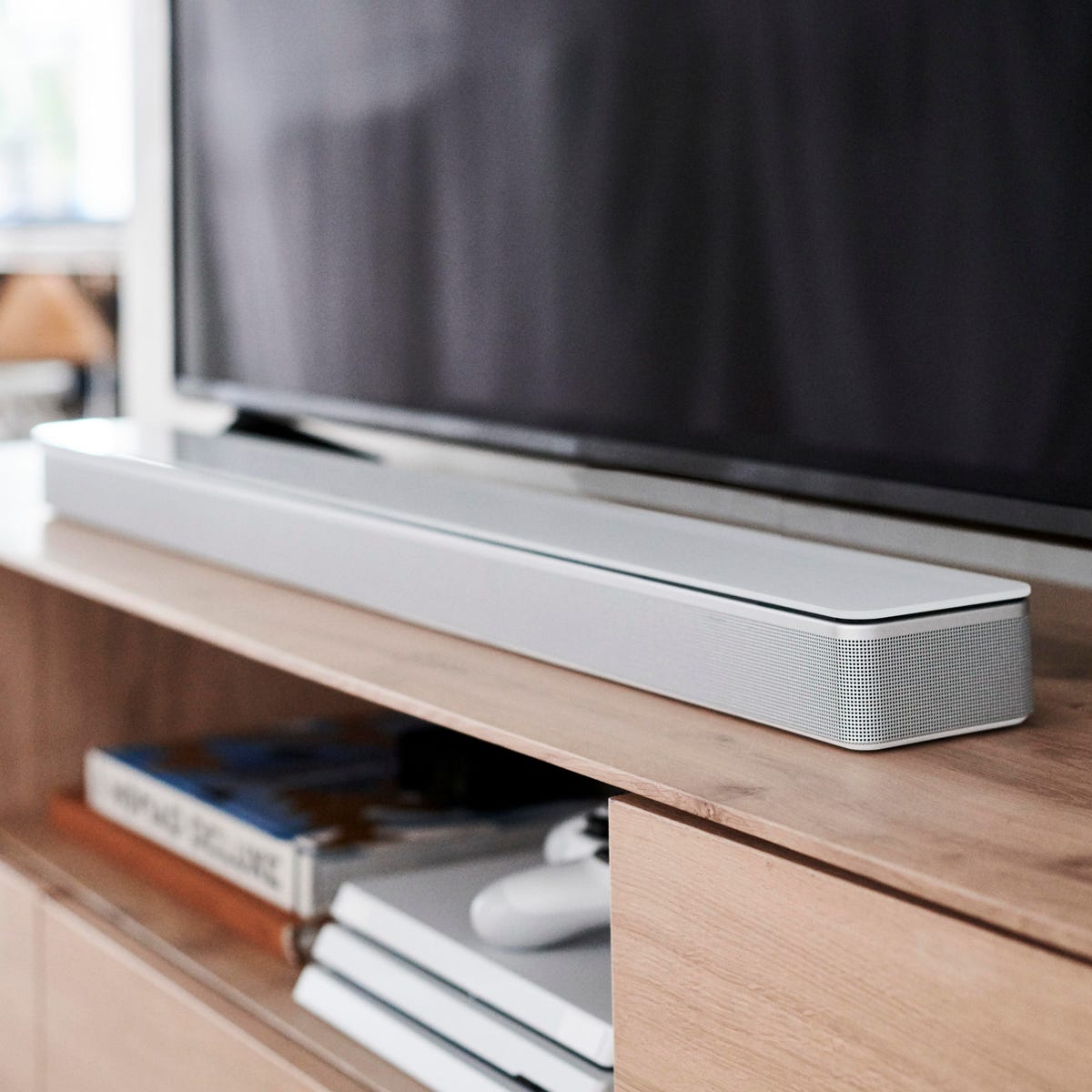

Bose
If you really want that home theater, you’ll need a receiver and speakers. These come in all shapes, sizes and prices — some requiring a lot more setup yet offering far better sound than what a sound bar can create. And while a sound bar can play music, real speakers will sound even better doing it.
Bonus!
One really last thing. Your new TV deserves good content. Specifically, 4K content. If your TV is HDR, it deserves HDR content too. Without 4K content, a 4K TV can’t look its best. Your old DVD collection along with most HD cable and satellite channels are going to look soft. This is because compared to the ultra-high resolution of your new TV, they are. With most streaming services, like Netflix, Amazon and Vudu, you need to pay extra to get 4K versions instead of HD. Make sure you at least check out some of this 4K content so you can see your TV at its best. If you don’t think it’s worth it, that’s fine, the price will come down eventually.
For even better quality, nothing beats physical media, like the aforementioned Ultra HD Blu-ray player playing Ultra HD Blu-rays. Just make sure if you’re using an external media streamer or UHD Blu-ray player that they’re connected and set up correctly too.
Best 4K Blu-rays






+31 more
Got a question for Geoff? First, check out all the other articles he’s written on topics like why all HDMI cables are the same, TV resolutions explained, LED LCD vs. OLED and more.
Still have a question? Tweet at him @TechWriterGeoff, then check out his travel photography on Instagram. He also thinks you should check out his best-selling sci-fi novel and its sequel.




